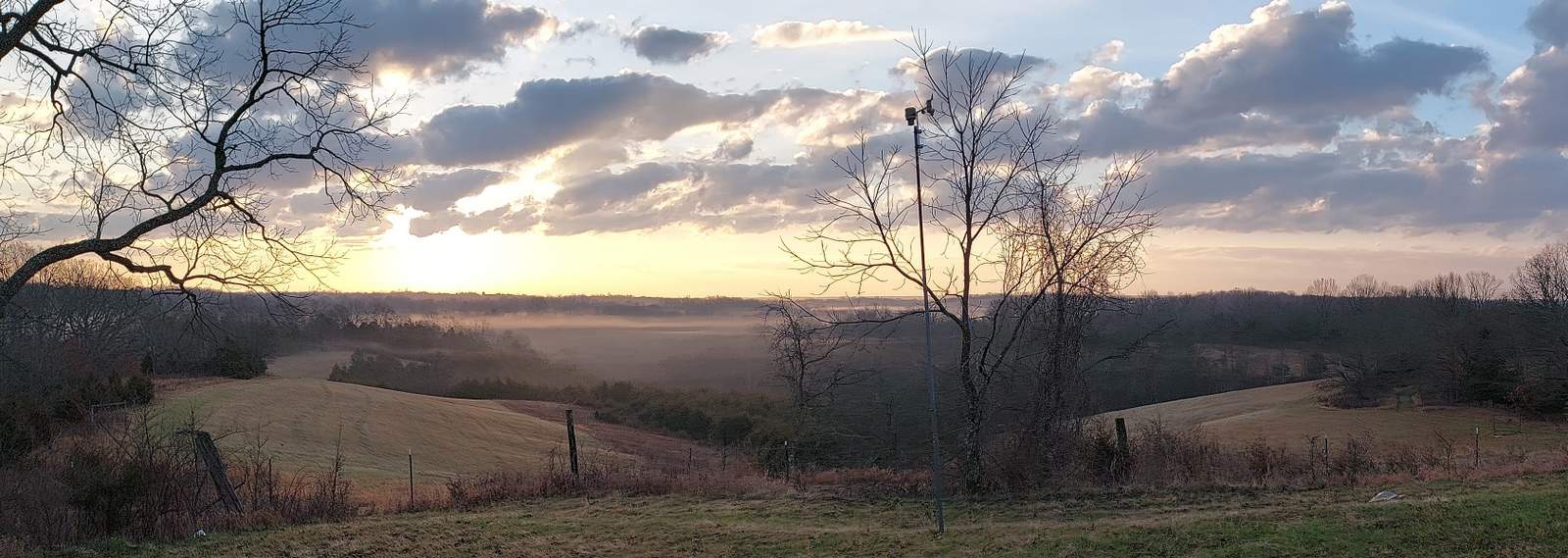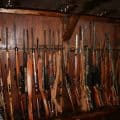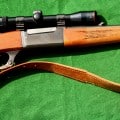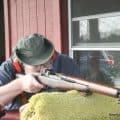Which is More? (a Rem 742 or a 30-06)
A while back, I got a hit on this weblog. Somebody had done a search on “Which is more a Rem 742 or a SPR 30-06?” That one stuck with me. It was fairly ignorant, definitely naive, but it just would not leave my mind. It dawned on me this morning that it was the kind of question I was asking 30-some years ago. At that time, I was asking all sorts of stupid questions, and my buddies did their best to answer them. Therefore, before I hang up my deer hunting hat for the season and put on my turkey hunting hat, I figured I owe this guy an answer. It has taken me a better part of a week to put this together. I found it wickedly hard.
First off, a Rem 742 refers to a Remington Model 742 autoloading rifle. It was made from 1960 and 1980. It was called the Woodsmaster. It was made in a bunch of chamberings, but the most popular was 30-06. I have one. I have not shot it since 2004. It malfunctioned and the gunsmith would not touch it. The 742 had a fatal flaw in its design. If you shot it enough, a channel in the steel receiver would wear and it would produce a condition known as “chattering.” It would eventually lead to the 742 jamming, and there was nothing that could be done.
“Spr 30-06” refers to the 30-06 Springfield . This is one of the most popular deer hunting cartridges around. Springfield refers to the Springfield Armory of the U.S. Government, the “30” refers to the .30″ bore and the “06” refers to 1906, the year it was officially adopted by the U.S. Government for use as a standard military clambering, first in the Springfield 1903 rifle.
The fellow typing in the search string obviously confused the model # of the rifle with nomenclature of the clambering when asking his question. That is okay. Everybody gets confused with stuff like this. The U.S. government had just changed its designations. The Government 45-70 was a 45 caliber rifle cartridge that used 90 grains of black powder. The civilian 30-30 was a .30 caliber rifle that used smokeless powder, but it was meant to sound cool compared to the 30/40 Krag, which the 30-06 replaced — well, actually it was the 30-03 that replaced it, but that is another long story.
Remington fixed the 742’s chattering problem and came up with an improved model 7400. “742” and “7400” have nothing to do with chamberings like “7.62” which actually the metric equivalent of .308″, which is actually the diameter of the bullets that fit a .30-caliber rifle.
To the original questioner: The deeper you get into this stuff, the more it will make your head spin. Let me try to pull away all the goo for a bit and give you some honest deer rifle advice.
A Short Primer on Deer Rifles
What I want to do here is set down a crystallized version of what I have figured out in the past 30-some years and distill it down for the version of me that was asking those questions back during Reagan’s first term.
Bigger/smaller faster/slower are the two concepts you need to concern yourself with. If you took high school physics you understand that Force equals Mass times Acceleration. If you did not take high school physics, this may all seem like magic. When I got started, I did not worry about the number of grains in the bullet. I just knew that my 30-06 took Remingtons (the green and yellow box) and that as long as it said the same thing on the box as was stamped on the barrel, I was okay. Up to a point, I was correct.
But if I buy 180 grainers this week and 150’s next week, what’s going to happen? The answer was that it was best to buy the same bullet weight if I did not want to keep heading back out to the range to sight things in. If I could not find the same size bullet, there would probably not be a lot of difference close-in (inside 50 yards or so), but the further out I shot the bigger the difference. The other thing I learned was that if I found a box that shot really well, I should go back and buy as much of that lot of ammo as possible.
Back to big/small fast/slow. A bigger bullet has more mass; it will impart more energy than a smaller one if you keep the velocity the same. A faster bullet has more force when it hits than a slower one given the same size bullet. So which is better? There are two schools of thought. One likes big slow bullets. One like small fast bullets. After 30 years, I have found the middle ground to be the preferred path. The extremes have their problems, but both schools produce dead deer.
Big bullets hit the air and immediately start to loose velocity. The bigger the diameter of the bullet, the more resistance it has to the air in front of it. A smaller diameter bullet has less of a problem with air resistance. The trade-off is the force imparted at the other end. A more massive bullet delivers more force when it hits the deer than a less massive bullet at the same velocity. A 44 magnum bullet out of a rifle has about the same force at 50 yards as a 30-30 bullet. They are both good close-in deer cartridges. However, a 30-30 is good out to maybe 150 yards. The 44 magnum peeters out pretty fast past 80 yards.
You can look back at my writings on deer rifles and deer chamberings, there is a lot more detail in all this. However, the middle ground in all this is just the right size bullet for the game you are taking and just the right distance you are going to encounter it. It is a highly subjective thing. I tell folks to look at a .300 Savage with a 150 grain bullet as the mid-point of the deer cartridge universe. You can go up or down in bullet size and velocity. However, if you are going to be shooting a deer inside 150 yards, this is the ideal deer cartridge.
You can also see the 7mm-08,the 7X57, .308 WIN as the center of your universe. It does not make any difference. Just find a spot and mark it in your head. Look up the velocity and the force of your choice and then use that as a benchmark. I do not even own a 300 Savage. I am just saying it is a good mid-point.
Now, there are families of cartridges. Look at the 30-30,300 Savage, 308 Win, 30-06 SPR and 300 Win Mag. These all use the same bullets, but drive them at different velocities. The air resistance is a constant drag. Gravity is constantly pulling the bullet back to earth. Therefore, a 180 grain bullet fired from a 300 Win Mag hits the deer at 200 yards with about the same velocity as the same bullet fired from a 30-06 at 100 yards. A 150 grain bullet fired from a 30-06 hits the deer at 200 yards with the same whallup as a 300 Savage at 100 yards or a 30-30 at the muzzle.
“Flat Shooting.” “Shoots flat out to 600 yards.” ” A 270 shoots flatter than a 30-06.” How many of these flat-related statements have you heard? Flat is good, right? Well, what is it? Let me explain, and let me assume you have not had high school physics. Everything on earth travels in an arc. If you throw a baseball, it travels in an arc. If you pass a basketball, it hurts really bad and not in the good way. ( Oops sorry, ) It travels in an arc, too. If you fire a bullet, it travels in an arc. “Flat” in this case means the arc is not as tall. Now let me introduce you to a better concept and that is Point Blank Range (PBR). Forget what you have heard about “Point Blank;” it is not synonymous with “In your face.” It means the maximum distance you can shoot without having to worry about elevating the rifle. You have to assume the size of the kill zone– say something like 4 inches. Then you ask the question: “What is the PBR of my rifle given a 4 inch kill zone?” The answer, after you crank the numbers may be something like 210 yards. What does that mean? It means that out to a distance of 210 yards, you can sight your rifle to hit in the center of that 4-inch kill zone and at no point from zero-to 210 yards will the bullet hit above or below 2-inches of where you aimed. A flatter-shooting rifle just has a longer PBR. Now, figure on how far out you figure on taking a deer ( 200 yards is a good number) and figure that anything bigger with stats at or above a 300 Savage or 7mm-08 is going to probably give you a PBR at or above 200 yards. All you have to do is sight-in your scope so it shoots 1 or 2 inches high at 100 yards and you are done.
Let me throw a mind-bender at you. If you shoot a rifle and drop a bullet from approximately the height of the rifle, they will hit the ground at the same time. Gravity is what is doing the work. Furthermore a big bullet and a little bullet will hit the ground at the same time– remember Galileo. Stand up right now and drop a penny to the floor– that is approximately how much time you have to work with when you fire a rifle. That is not completely accurate. The bullet is traveling in an arc, right? Okay, toss the penny up 6 inches and then let it fall to the floor. There. Now you have it right. By re-forming that penny into a bullet shape and sending it out the bore of the rifle, all you are doing is lengthening the toss. The vertical drop is roughly the same.
Up until the bullet leaves the barrel, the major force acting on the bullet is the rapidly expanding gas that is pushing it out the bore. Once it leaves the barrel, only two forces are acting on the bullet. One is the gravity just mentioned. The other is the air resistance that acts to slow the bullet. That is it. You will hear folks say stupid things about bullets increasing velocity after 300 yards, but that is complete hooey. The bullet is falling through the air. You may give it a bit of a loft, but it still hits the ground about the same as if you had dropped it. Remember that raising the gun barrel just tosses the bullet a little higher.
There is a factor here that I have not discussed yet, and that is recoil. To me, recoil is what drives the decision to seek that middle ground I was talking about earlier. The 30-06 has between 15 and 20 ft/lbs of recoil at 11/13 feet/sec. That is about as much recoil as most of us can handle comfortably. If you drive a bullet much more than that with and average hunting rifle you get into a realm of recoil where a good many of us develop a flinch. The trick in deer hunting is not to see how much punishment your shoulder can take. The trick is to get a tool that gives you enough force to drop a deer at a given range of distances.
Most deer are shot (forget what the magazines say) inside 80 yards. Most deer rifles are built to take deer out to at least 200 yards. Beyond that, most people do not have the patience to do the practice necessary to kill the deer. If your buddy says he killed a deer with at 30-30 at 600 yards with iron sights, nod politely and let it drop.
What takes deer inside 80 yards? Just about anything. Inside 150 yards? It depends. I stop liking 30-30 at much beyond 100 yards. Your tastes may differ. 300 Savage velocities stop impressing me at about 150 yards. 30-06? I am cool to 200-300 yards. Beyond that? I get closer. You may see this differently, but you need to practice a bit at targets and get back to me. Reading Outdoor Life does not count.
If you skipped high school physics, your head may be spinning again. What causes recoil? The answer is that the same force is imparted to your shoulder as is imparted to the bullet. Bigger bullet with same velocity equals more recoil. Same bullet moving faster? More recoil. Lighter rifle? More recoil. The other thing that adds to recoil is the pressure in the chamber and barrel. Basically, if you pack enough powder in to increase the pressures in the chamber, you may have a lot more pressure with only a small gain in velocity. That explains why your buddy’s reloads knock you to the ground while the store-bought stuff in the same rifle is gentle on your shoulder. By the way: stay away from that buddy. He is going to be wearing that rifle some day.
Now, so far I have not discussed energy. Why not? It is kinetic energy that kills the deer, right? The bullet hits the hide, punches through, runs through a few vital organs and then passes out the other side. All the time it is transferring kinetic energy from the bullet to the deer. The reason I have not discussed this so far is that this is the easiest of the factors to figure out. Some use 1000 ft/lbs of energy as a benchmark– if your bullet hits with at least that much energy, you have venison. Some argue you need more. Most will concede that considerably less will still kill. My point is that if you look on a table like this one:
. . . most chamberings you find will have 1000 or more ft./lbs of energy at 150 yards and nearly anything you can sanely conceive of using to hunt deer have it inside 50. My point is that this is the easiest to solve. If you take a deer at 100 yards with a 30-06 versus a 300 Win Mag, the difference will be significant on paper, but most of that difference will be spent in the dirt on the other side of the deer. The deer is dead either way.
What I did not have 30 years ago that I do have now is PointBlank software. It is free. You do not have to have high school physics as a prerequisite, and most of what I have told you so far can be demonstrated fairly easily by playing around with the software. Some quick hints:
1) Ballistic Co-Efficient is the amount a bullet is affected by friction with the air. You will need that number for your bullet to make calculations. The software has a table of know BC’s for most popular bullets. You don’t have to understand the calculation, just know the number for your bullet. If the table does not have a listing for your bullet, look up a similar bullet, or go on the manufacturers website and look it up. Most publish BC’s for their bullets.
2) With factory ammo, plug in the numbers for bullet weight, velocity and such from the back of the box or look it up on the company’s website. You will not know the powder or the number of grains of powder, but the important thing is the velocity it produces.
3) Point Blank Range is calculated for you in the software; you do not need to know much more than the size of the target (4 inches is good for whitetails)
The big lesson this software will teach you is that most sanely conceived deer rifles will turn a deer into venison, given a modicum of good sense and fair shooting. Most of the differences that fill the pages of magazines year after year are not worth spit when it comes to putting a deer down.
Bullet choice is another easy no-brainer. I have hunted for 30-some years already and so far I have had only 3 bullets not exit the deer completely. The latest was this past year with my son. He found what was left of a 180 grain Speer stuck in the hide of his deer. I have never bought a premium bullet. I have never had a bullet fail. I use Hornady Interlok Spire Points, Remington Core-lokts and Winchester Power-points almost exclusively. I have not found a deer that will deflect these bullets. I attribute my success to the middle-path I discussed earlier. I do not shoot deer at extreme ranges. I do not drive bullets past their limits. I pull the trigger, and for the most part, the deer cooperate and fall over dead.
There. I have given you all that I needed to ask 30-some years ago and the wisdom gained.There is a lot more too it, and I would invite you to dig deeper and keep digging– on this weblog and elsewhere, but now I can put the last deer rifle in the cabinet, start dusting off the turkey guns and get on with things. I hope y’all have a good winter.
This post has already been read 612 times!
Views: 1







Comments
Which is More? (a Rem 742 or a 30-06) — No Comments
HTML tags allowed in your comment: <a href="" title=""> <abbr title=""> <acronym title=""> <b> <blockquote cite=""> <cite> <code> <del datetime=""> <em> <i> <q cite=""> <s> <strike> <strong>